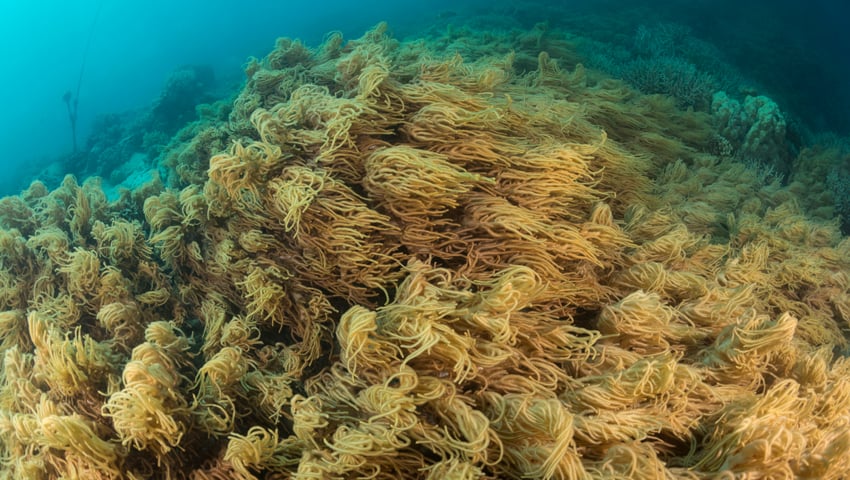The Blue Carbon Mapping Project, completed by the Scottish Association for Marine Science (SAMS) on behalf of WWF, The Wildlife Trusts and the RSPB, reveals that 244 million tonnes of organic carbon are stored in just the top 10 centimetres of UK seabed habitats, with 98 per cent stored in seabed sediments such as mud and silt.
UK seabed habitats could capture up to 13 million tonnes of organic carbon every year – almost three times the amount sequestered by the UK’s forests.
Seas around the UK and Isle of Man cover nearly 885,000 square kilometres – over three times the size of the UK’s land mass. This vast area is host to habitats that capture and store carbon, known as ‘blue carbon’. They include seabed sediments (made of mud, silt and sand), vegetated habitats (seagrass meadows, saltmarshes, kelp forests and intertidal seaweeds), maerl beds and biogenic reefs, such as mussel beds and honeycomb worm reefs.
Carbon is primarily absorbed by phytoplankton, which drift to the bottom of the sea when they die and are added to seabed sediment. The research analysed the storage capacity of just the top 10cm of sediment. Some sediments are hundreds of metres thick and contain millennia’s worth of carbon, so the total carbon stored will be far, far greater.
Joan Edwards, director of marine policy for The Wildlife Trusts, said, “These world-first reports reveal the enormous value of UK seas, while highlighting that many areas need far better protection. We need strategic decision-making from policymakers to recognise the value of blue carbon by minimising the impact of human activities on the seabed. Damaging activities such as bottom trawling and large development must not take place in protected areas. This research gives the UK an opportunity to lead the world in protecting blue carbon and marine biodiversity.”
The Blue Carbon Mapping Project highlights how physical disturbances to the seabed, including from human activity such as bottom trawling, as well as moorings and offshore developments, pose threats to blue carbon stores. Disturbing seabed habitats can release large amounts of carbon into the atmosphere, worsening climate change.
WWF, The Wildlife Trusts and the RSPB are calling on governments across the UK to strengthen protections for valuable blue carbon stores – including in Marine Protected Areas (MPAs) – by minimising the impacts of human activities on the seabed.
Most MPAs were not designated to protect blue carbon, and failing to protect these areas from disturbance could threaten climate and biodiversity goals – including net-zero and protecting 30 per cent of seas by 2030.
WWF, The Wildlife Trusts and RSPB are calling for:
Better management of MPAs:
- Ensure that all MPAs are protected from destructive activities that damage blue carbon habitats and threaten marine life
- Account for both carbon and biodiversity in designating new protected areas, to support ecosystem resilience and the role seas play in climate mitigation
Improved strategic planning of activities in UK seas:
- Consider blue carbon in UK marine plans, avoiding damaging activities in MPAs and other key areas for blue carbon and wildlife that are not protected
- Minimise the impacts of fishing and developments by undertaking blue carbon impact assessments
- Support a just transition for fishing industries away from activities that damage the seabed
More investment and research on protecting blue carbon:
- Allocate funding to restore habitats including seagrass beds and saltmarshes
- Support research and monitoring of blue carbon dynamics
- Add seagrass and saltmarsh to the Greenhouse Gas Registry to track and monitor emissions
Kirsten Carter, head of UK marine policy at the RSPB, said, “Accelerating efforts on land to tackle the nature and climate emergency is critical, but we must not underestimate the role of UK seas. This report is a gamechanger for our knowledge of the marine environment and a huge asset for decision-makers. Now we need them to act on its findings. To meet net zero and stop biodiversity decline we must work with nature, not against it. This means restoring habitats, properly planning offshore development, and investing in protected areas to safeguard wildlife and keep blue carbon locked up.”
Read the report, Blue carbon: The need to protect essential stores of carbon in our seas
